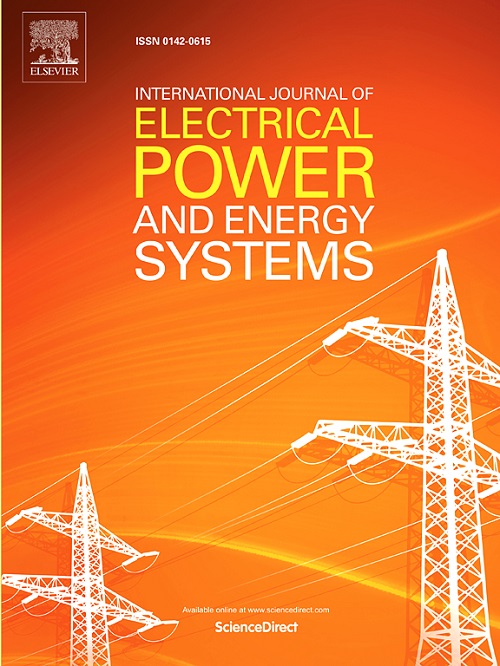用直接法分析低惯量电力系统电网跟随变流器暂态稳定性
IF 5
2区 工程技术
Q1 ENGINEERING, ELECTRICAL & ELECTRONIC
International Journal of Electrical Power & Energy Systems
Pub Date : 2025-09-23
DOI:10.1016/j.ijepes.2025.111155
引用次数: 0
摘要
随着可再生能源渗透率的提高和同步发电机比例的降低,当今电力系统的低惯性特性日益突出,低惯性系统(LIS)条件下电网跟随变流器(GFLC)的暂态稳定问题变得至关重要。GFLC-LIS的暂态稳定性分析存在两个突出问题:LIS的角动态特性增加了暂态稳定性分析的复杂性;GFLC可能存在的非线性负阻尼使得传统方法的保守性难以保证。这些问题使得传统的方法难以适用。本文研究了GFLC-LIS的瞬态稳定性分析,以准确估计其吸引边界和临界间隙时间(CCT)。首先,考虑基于锁相环的GFLC动力学和基于摆动方程的LIS动力学,建立了GFLC-LIS的动力学模型;还考虑了锁相环在故障发生和清除时的频率突变。其次,提出了一种基于zubov的暂态稳定分析方法,该方法能够以一种不同于传统能量守恒观点的方式构建能量函数,并能解决负阻尼问题。分析了CCT估计的精度,并说明了LIS参数对暂态稳定性的影响。最后,通过仿真实验验证了所提方法的有效性。本文章由计算机程序翻译,如有差异,请以英文原文为准。
Transient stability analysis for grid following converters in low-inertia power systems by direct method
With the increased penetration of renewable energy and reduced proportion of synchronous generators, the low-inertia characteristics of today’s power system become prominent, and the transient stability issue of grid following converter (GFLC) under low inertia system (LIS) condition becomes critical. There are two prominent problems in the transient stability analysis of GFLC-LIS: The angular dynamic of LIS increases the complexity of transient stability analysis, and the nonlinear, possibly negative damping of GFLC makes it difficult to guarantee the conservative of the traditional methods. These problems make the traditional methods inapplicable. In this paper, the transient stability analysis of GFLC-LIS is investigated to provide an accurate estimation of the attraction boundary and critical clearance time (CCT). Firstly, a dynamic model of GFLC-LIS is constructed, considering the phase-locked loop (PLL)-based GFLC dynamics and swing equation-based LIS dynamics. The frequency mutation of PLL at fault occurrence and clearing time is also considered. Secondly, a Zubov-based transient stability analysis method is proposed, which can construct the energy function in a way that is different from the traditional conservation of energy perspective and can address the negative damping issue. Moreover, the accuracy of the CCT estimation is analyzed, and the influences of LIS parameters on transient stability are illustrated. Finally, simulation experiments are carried out to verify the effectiveness of the proposed method.
求助全文
通过发布文献求助,成功后即可免费获取论文全文。
去求助
来源期刊
CiteScore
12.10
自引率
17.30%
发文量
1022
审稿时长
51 days
期刊介绍:
The journal covers theoretical developments in electrical power and energy systems and their applications. The coverage embraces: generation and network planning; reliability; long and short term operation; expert systems; neural networks; object oriented systems; system control centres; database and information systems; stock and parameter estimation; system security and adequacy; network theory, modelling and computation; small and large system dynamics; dynamic model identification; on-line control including load and switching control; protection; distribution systems; energy economics; impact of non-conventional systems; and man-machine interfaces.
As well as original research papers, the journal publishes short contributions, book reviews and conference reports. All papers are peer-reviewed by at least two referees.

 求助内容:
求助内容: 应助结果提醒方式:
应助结果提醒方式:


